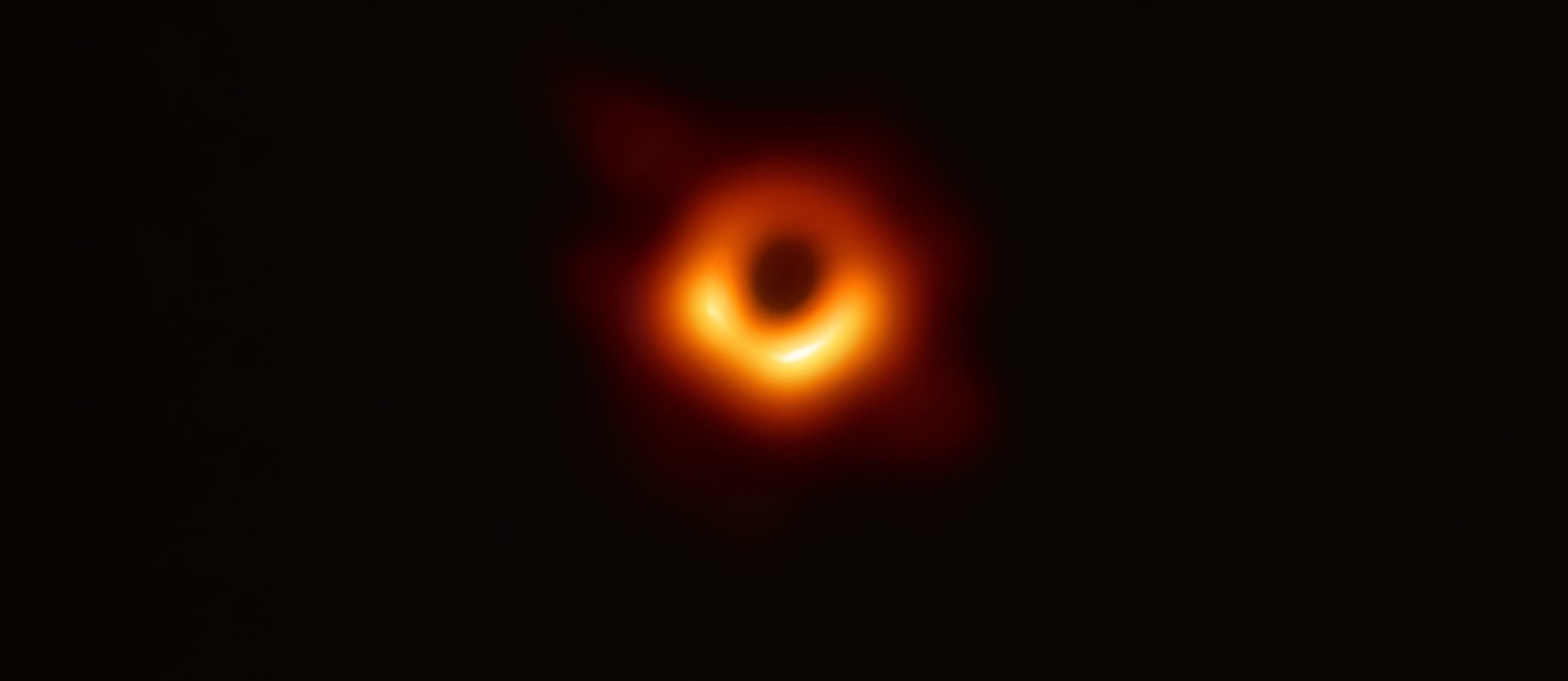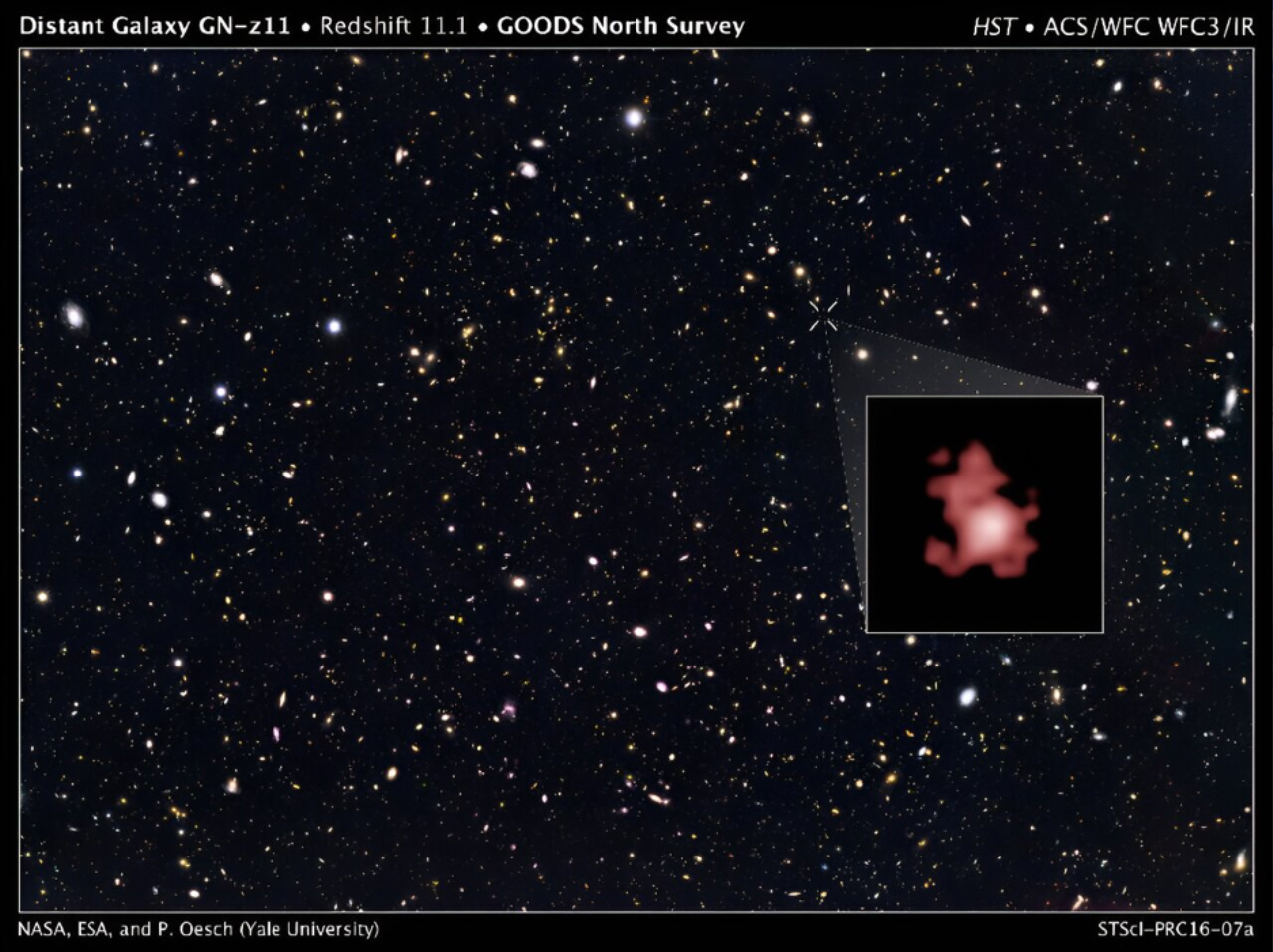
The hungriest black hole in the universe.
Astronomers discover the oldest black hole ever observed in the early universe. And it is slowly devouring the galaxy that created it.

The researchers discovered the new black hole with the help of the James Webb Space Telescope due to the surprising luminosity of its host galaxy. Many large galaxies have supermassive black holes. Black holes are astronomical objects with a tremendous gravitational pull. Nothing escapes them, not even light. They are basically regions in space in which huge concentrations of matter are squeezed together in a very small space. At the centre of our Milky Way, for example, is Sagittarius A*, which is four million times the mass of the sun.

The galaxy GN-z11, at the center of which the James Webb space telescope has discovered the oldest black hole ever detected.
The scientists concluded that the glow of GN-z11 is due to the accretion disc of the black hole. Apparently, the black hole "eats" a lot of gas from the galaxy and thus prevents the formation of new stars. Most likely, the black hole will slowly kill the galaxy, destroying its food source. Supermassive black holes tend to consume the matter of a star in their vicinity. As this happens, the gas around the black hole settles into a hot, bright, rapidly rotating disc called an accretion disc, which is also the black hole's brightest source of light and the biggest indicator of a black hole in space.
The newly discovered black hole is several million times heavier than our sun. A surprising discovery that calls into question everything we knew about the formation of black holes. This is because it was previously assumed that supermassive black holes of this type grow over billions of years after the Big Bang, but the inhabitant of GN-z11 is far too heavy to have gained its mass in such a short period of time. Roberto Maiolino said that it is still very early in the universe to see such a massive black hole, thus we need to consider other ways they could have formed.
The standard models assume that black holes form from the remnants of dead stars, which become heavier and heavier over time. The new discovery contradicts the standard models and opens the way to new theories. The scientists now hope to gather more information with the help of the James Webb Space Telescope. The question that needs to be answered is: How big are black holes at birth and how fast can they grow?
Original publication:
Maiolino, R., Scholtz, J., Witstok, J. et al.
A small and vigorous black hole in the early Universe
Nature 627, 59–63 (2024).
DOI: doi.org/10.1038/s41586-024-07052-5









